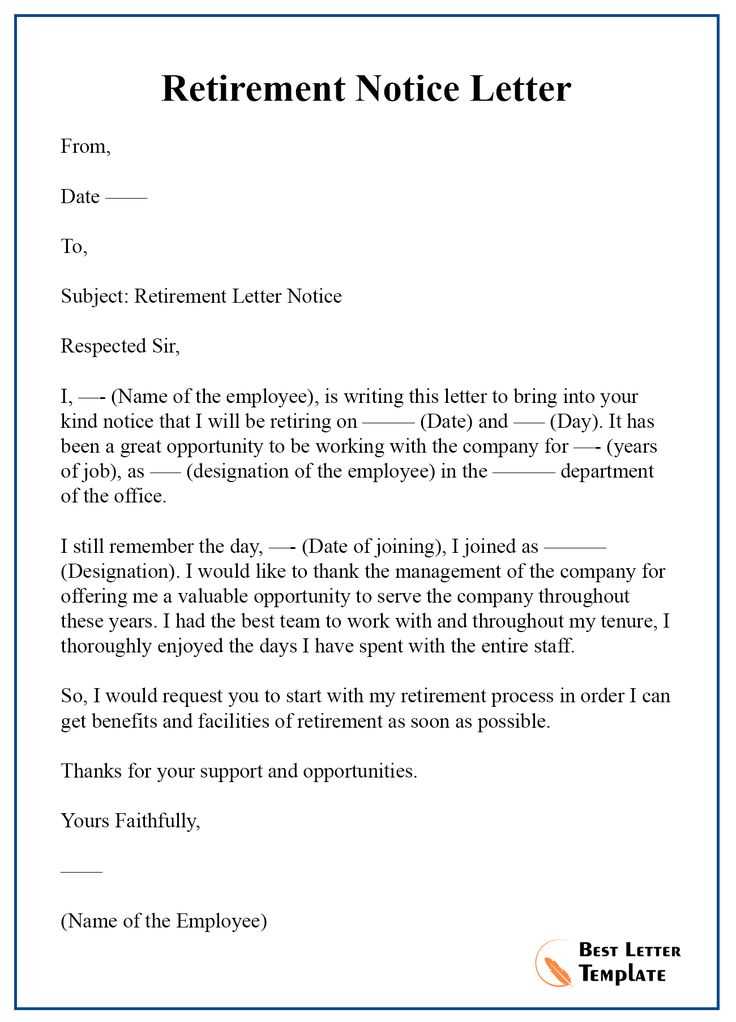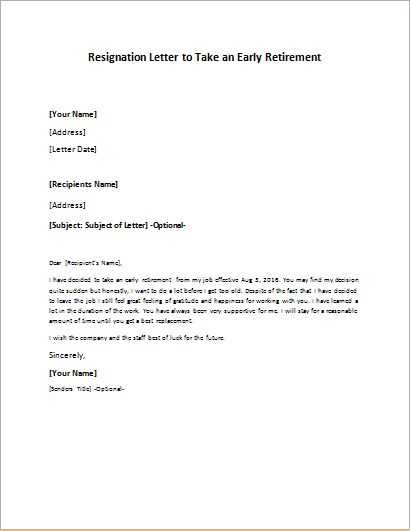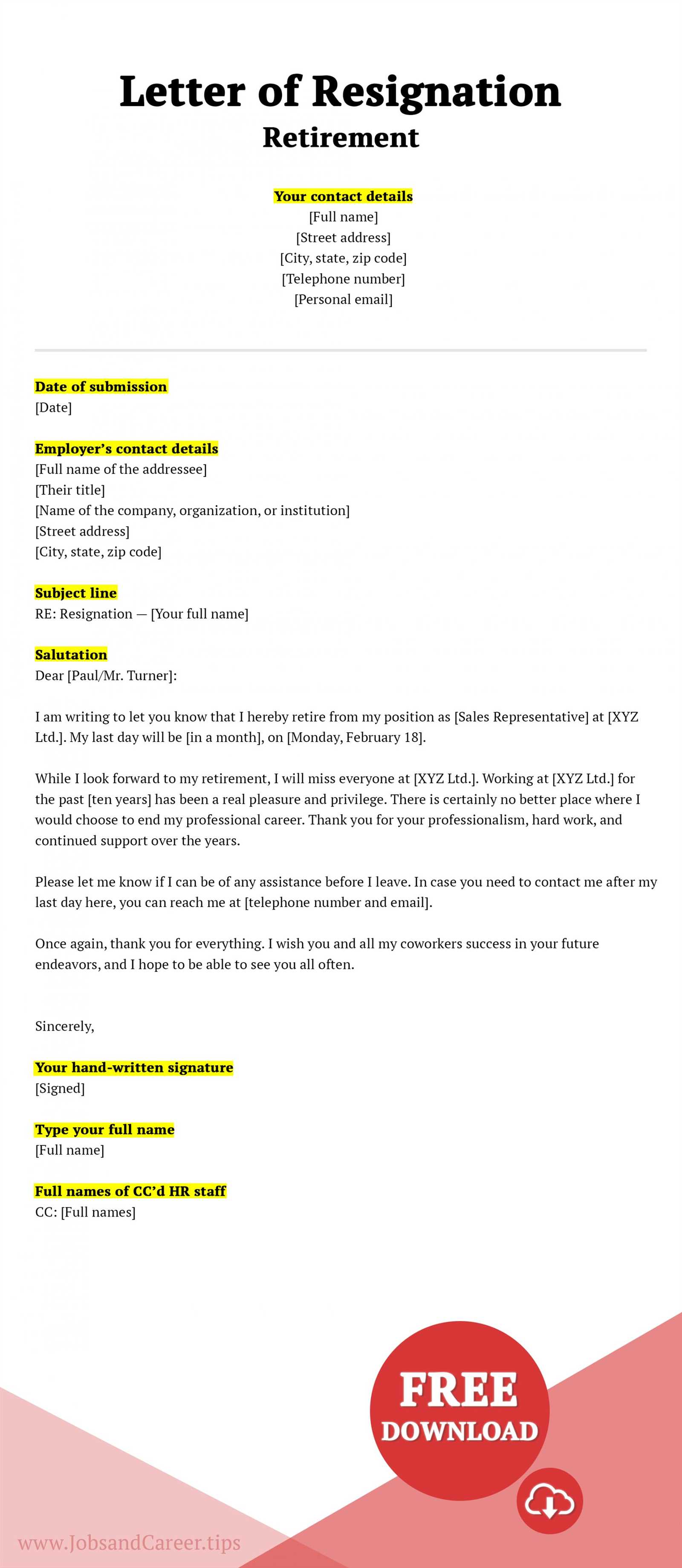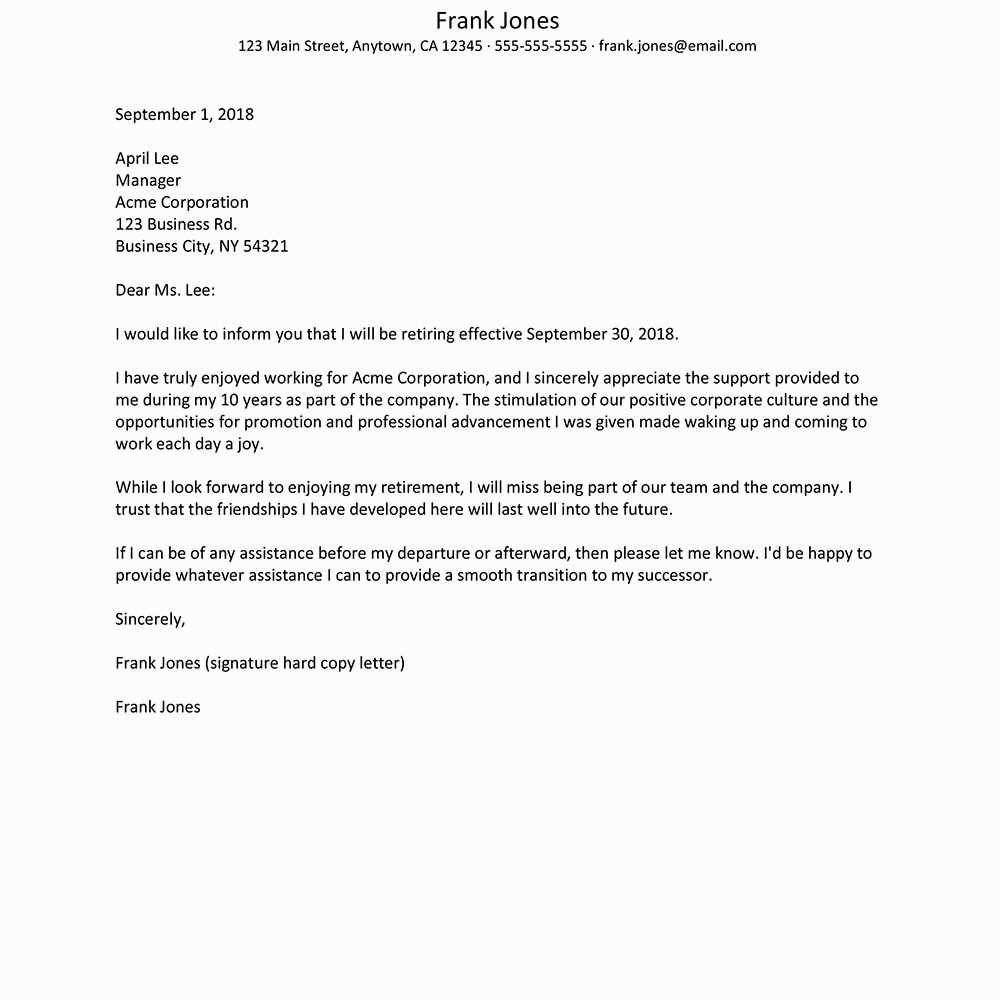Letter of Retirement Template for UK Employees

When it comes time to step away from your professional role, submitting a formal notice is an essential part of the process. This document serves as your official communication to inform your employer and colleagues of your decision, ensuring a smooth transition. Crafting a clear and respectful message is vital, as it reflects your professionalism and leaves a positive impression.
Key Elements to Include

A well-crafted document should include certain key points. These elements help ensure your message is concise, respectful, and complete:
- Personal Information: Include your name, position, and department.
- Notice Period: Mention the length of notice you are providing according to your contract.
- Express Gratitude: Acknowledge the opportunities and experiences you’ve had with the company.
- Offer Assistance: Suggest ways you can help with the transition, such as training a successor.
- Contact Details: Provide information on how to reach you after leaving.
Timing and Professionalism
Sending your departure notice at the right time is crucial. Ideally, it should be submitted well in advance to allow sufficient time for the organization to plan for your absence. Maintaining a formal and respectful tone throughout will ensure your notice is taken seriously and leaves a lasting, positive impression.
Common Mistakes to Avoid

While the departure process is straightforward, there are a few common errors to steer clear of:
- Being vague or unclear about the timeline.
- Failing to express gratitude for the opportunities provided.
- Neglecting to offer support during the transition.
- Using an informal tone that may be seen as unprofessional.
Sample Departure Notice

Here is a simple example of how a formal departure notice might look:
Subject: Formal Notification of Departure
Dear [Manager’s Name],
After careful consideration, I am writing to formally notify you of my decision to step down from my position as [Your Job Title] at [Company Name], effective [Date]. I am grateful for the opportunities and experiences I have gained during my time here.
As per my contract, I will provide [X weeks/months] notice and will do everything I can to assist with the transition. Please let me know how I can help during this period. You can reach me at [Your Contact Information] after my departure.
Thank you for the support and guidance you have provided during my tenure. I wish the company continued success in the future.
Sincerely,
[Your Name]
Steps to Draft a Resignation Notice
When the time comes to leave your position, preparing a formal notification to inform your employer is an essential step. A well-written resignation ensures clarity and professionalism, allowing both parties to manage the transition effectively. The process involves a few key actions, such as identifying the correct timing, including relevant details, and maintaining a respectful tone throughout the communication.
Key Information to Include
Your formal communication should cover all necessary points to ensure a smooth and respectful departure. The key elements to include are:
- Personal Details: Clearly state your name, job title, and department to avoid any confusion.
- Effective Date: Indicate the exact date your resignation will take effect, providing a clear notice period.
- Reason for Leaving: While optional, briefly stating the reason for your decision can provide context and help maintain transparency.
- Gratitude: Always express appreciation for the opportunities and experiences gained during your time with the company.
- Offer to Assist: Mention your willingness to help with the transition, such as training a replacement.
Optimal Timing for Submitting Your Notice
The timing of your resignation is crucial. It’s important to submit your notification with enough lead time to allow your employer to manage the transition smoothly. Generally, a notice period of at least one month is expected, but check your employment contract for specific requirements. Providing ample time allows for proper planning and shows professionalism.
When drafting your notice, keep the tone professional and polite. Even if you are leaving due to dissatisfaction or personal reasons, maintaining a positive and respectful approach will help preserve your professional relationships.
Common Mistakes to Avoid
Avoid these common errors when preparing your resignation:
- Providing insufficient notice, leaving your employer unprepared.
- Being vague or overly informal in the communication.
- Failing to express gratitude for the role and experiences gained.
- Not offering assistance during the transition period.
Effective Resignation Samples for Reference
Here’s a basic sample that can guide you in crafting your own formal notice:
Subject: Notice of Resignation
Dear [Manager’s Name],
I am writing to formally resign from my position as [Your Job Title] at [Company Name], effective [Date]. I am grateful for the opportunities I’ve had during my time here and appreciate the support from you and the team.
I will gladly assist in any way possible during my notice period to ensure a smooth handover of my responsibilities. Please let me know how I can help during this transition.
Thank you once again for the experience and support.
Sincerely,
[Your Name]
Key Considerations for UK Resignation Notifications
When submitting your notice in the UK, ensure that you adhere to any legal and contractual requirements. Be mindful of the notice period stipulated in your employment contract and take into account any specific company policies regarding resignation. By doing so, you demonstrate professionalism and respect for the organization’s processes.